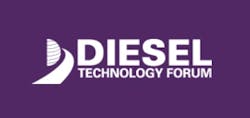Diesel Remains Most Prevalent Fuel: DTF
Diesel is the predominant technology in commercial trucking, school, and transit bus sectors, according to the Diesel Technology Forum’s analysis of data sourced from S&P Global Mobility TIPNet data of vehicles in operation for Class 3-8 as of December 2021.
“It’s a very dynamic time for fuels, technology and mobility and it is important to understand which technologies are powering these sectors today to better inform our understanding and in making decisions about the future,” said Allen Schaeffer, executive director, in a prepared statement.
How many trucks use diesel?
Three-quarters (76 percent) of the approximately 15 million commercial trucks (Class 3-8) that operate in the U.S. run on diesel power. Of those, the newest generation of advanced diesel technology models now account for 53 percent of that fleet. Other fuels that play a role in commercial trucking include gasoline (23 percent) and compressed natural gas (0.4 percent).
Electric and other categories each register less than 1 percent. Of the largest trucks (Class 8) in operation, 97 percent are diesels. About 32 percent of all electric trucks nationwide are in California, where for every electric truck there are about 300 diesel trucks (all years, Classes 3-8).
Last year, Indiana had the largest amount of new-generation diesel trucks registered (69.3 percent), followed by Utah (63.2 percent), Pennsylvania (62.8 percent), Texas (60.1 percent), Oklahoma (60.0 percent), Florida (59.1 percent), the District of Columbia (58.4 percent), Illinois (56.2 percent), Maryland (55.7 percent), and Wisconsin (55.5 percent).
For the largest commercial trucks (Class 8), 62.5 percent of diesels on the road are 2007 and newer which means they are equipped with at least a diesel particulate filter. For gasoline vehicles that make up about a quarter of all commercial trucks (Class 3-8), more than half (57.5 percent) of those in operation are 2007 and newer model years.
The significance of the model years (2007 and 2010 and later MY) relates to emissions standards and the introduction of new emissions controls such as particulate filters, oxidation catalysts, and selective catalytic reduction systems. This enables new diesel engines to achieve near-zero emissions with increasing fuel efficiency and lower carbon dioxide (CO2) emissions.
In previous research commissioned for DTF, AutoForecast Solutions found that increasing the number of advanced diesel technology trucks on the road will eliminate more than 1.3 billion metric tons of CO2 during this decade.
“Even as zero emission technologies emerge, there is a consensus that diesel technology will continue to dominate these sectors for decades,” Schaeffer stated. “Diesel is the technology of choice in each of these sectors because it offers the best all-around set of advantages over other options. Diesel is proven, safe, efficient, reliable, durable, and economical. Established fueling, maintenance, and parts networks nationwide, as well as the well-documented secondary resale markets are other key differentiators of diesel technology.
“With today’s advanced diesel technology achieving near-zero emissions, and even further reductions anticipated, coupled with suitability for running on a wide range of low-carbon renewable bio-based diesel fuels, all but ensures diesel’s role in the future.”
Source: Diesel Technology Forum
